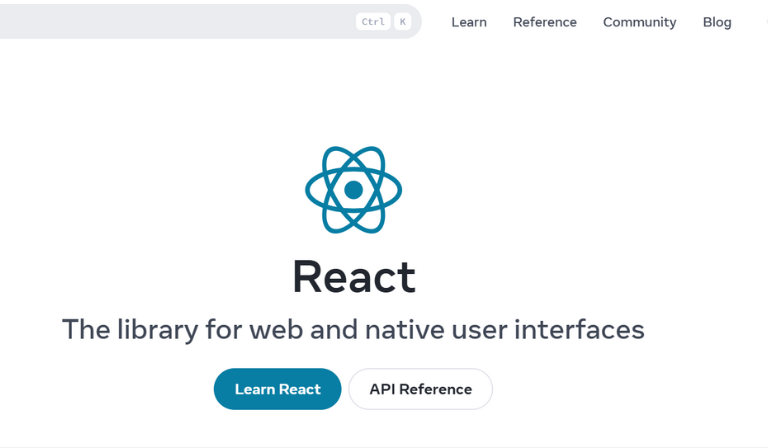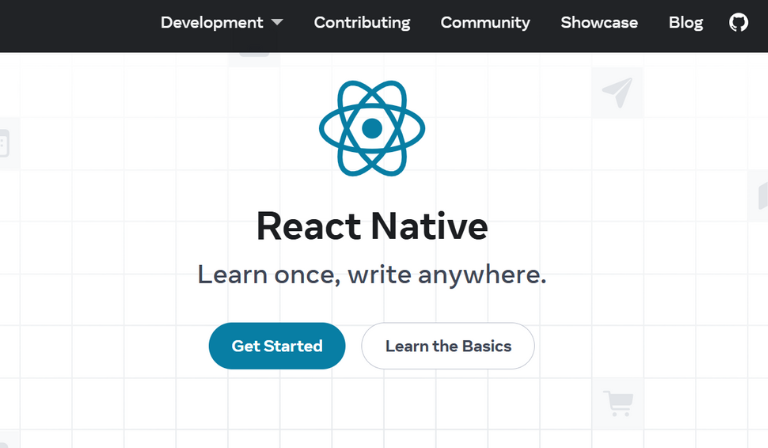React.js vs React Native: Which One Should Singapore Businesses Use in 2025?
In Singapore’s digital-first market, many businesses face the same question: Is React Native and React.js same? While both come from Meta’s React ecosystem, they serve different needs. React.js powers fast, dynamic web apps, while React Native enables cross-platform mobile apps for iOS and Android.
This article explains what is React.js vs React Native, the key differences, pros and cons, and use cases—helping Singapore startups and enterprises decide which technology fits best in 2025.
Table of Contents
- What Is React JS?
- What Is React Native?
- React JS vs React Native: Key Differences
- React.js or React Native: Which Should Singapore Businesses Choose?
- How Kaopiz Helps Singapore Businesses with React Technologies
- Conclusion
- FAQs
What Is React JS?
React.js (often simply called React) is an open-source JavaScript library developed by Facebook (now Meta) in 2013. It helps developers build fast, interactive, and scalable user interfaces for web applications. Today, it is one of the most popular front-end tools, backed by a large global developer community.

Key Features of React.js:
- Component-Based Architecture – Apps are built from reusable components, improving efficiency.
- Virtual DOM – Updates only the necessary parts of a page, ensuring smooth performance.
- One-Way Data Binding – Predictable data flow, making debugging easier.
- Rich Ecosystem – Integrates with libraries and frameworks like Redux, Next.js, and TypeScript.
Common Use Cases:
- Single-Page Applications (SPAs) with dynamic content.
- Enterprise dashboards showing real-time analytics.
- E-commerce platforms with complex features.
- Content-driven portals like news or social networks.
Pros and Cons of React.js:
| Pros | Cons |
|---|---|
| High performance with Virtual DOM | Requires learning JSX (steep learning curve for beginners) |
| Large, active community and strong Meta support | Fast-changing ecosystem requires frequent updates |
| Reusable components speed up development | Primarily focused on web (not mobile) |
| Easy integration with other tools and libraries | Some advanced setups (e.g., state management) can get complex |
What Is React Native?
React Native is an open-source framework created by Facebook (Meta) in 2015. This program for app development allows developers to build cross-platform mobile applications for iOS and Android using JavaScript and React principles. Instead of writing separate codebases for each platform, React Native enables developers to reuse much of the code, reducing development time and cost.

Key Features of React Native:
- Cross-Platform Development – Write once, run on both iOS and Android.
- Native-Like Performance – Uses native components to deliver smooth user experiences.
- Hot Reloading – Developers can instantly view changes without rebuilding the entire app.
- Strong Ecosystem – Backed by Meta and supported by a large community with many third-party libraries.
Common Use Cases:
- Mobile applications for iOS and Android.
- Startups and SMEs launching apps quickly with limited budgets.
- Cross-platform products like social apps, messaging apps, and e-commerce apps.
- Singapore examples: fintech superapps, e-wallets, lifestyle and travel apps.
Pros and Cons of React Native:
| Pros | Cons |
|---|---|
| Single codebase for iOS & Android (cost and time efficient) | Still not as fast as fully native apps in complex cases |
| Delivers near-native performance and UI | Performance may suffer for heavy, graphics-intensive apps |
| Large community, backed by Meta | Reliance on third-party libraries for some features |
| Faster development with hot reloading | Debugging can be more complex than in React.js |
React JS vs React Native: Key Differences
Although both come from Meta’s React ecosystem and share similar principles, React.js and React Native are built for different purposes. Understanding their key differences helps Singapore businesses choose the right technology for web or mobile projects.
The table below highlights the main differences between React.js vs React Native across key factors such as platform, performance, and cost efficiency.
| Criteria | React.js | React Native |
|---|---|---|
| Platform & Usage | Best for building web applications such as dashboards, SPAs, and enterprise portals. | Designed for mobile applications, supporting both iOS and Android with one framework. |
| Performance & Speed | High performance for web apps thanks to the Virtual DOM and optimized rendering. | Near-native performance for mobile but may lag in heavy graphics or complex animations compared to fully native apps. |
| Code Reusability | Reusable components across web projects, but code is limited to web platforms. | Large portion of codebase reusable across iOS and Android, saving time and costs. |
| Ecosystem & Community Support | Mature ecosystem with tools like Redux, Next.js, and strong global adoption. | Growing ecosystem, backed by Meta and widely used for mobile-first startups and superapps. |
| Learning Curve & Skills Needed | Easier for developers familiar with JavaScript and web development. Requires learning JSX. | Requires React knowledge plus understanding of mobile development concepts (native modules, platform APIs). |
| Cost & Time Efficiency | Cost-efficient for web projects but requires separate solutions for mobile. | More cost- and time-efficient for mobile apps since one codebase covers iOS & Android. |
Platform & Usage
The most fundamental difference between React.js vs React Native lies in their platforms. React.js is tailored for building web applications—from lightweight SPAs to complex enterprise dashboards. It excels when businesses need interactive, fast-loading web interfaces.
On the other hand, React Native is designed for mobile app development, enabling companies to deliver apps for both iOS and Android using a single framework. In Singapore, where smartphone penetration is among the highest globally, React Native is especially attractive for startups and enterprises aiming to launch mobile-first solutions quickly and efficiently.
Performance & Speed
React.js vs React Native difference can be seen in how each handles performance and speed. React.js achieves high performance in web applications through its Virtual DOM, which updates only the elements that change rather than re-rendering the entire page. This makes web apps smoother, more responsive, and well-suited for complex dashboards, SPAs, and enterprise tools that rely on real-time data.
React Native delivers near-native performance on mobile by using native components under the hood. Apps built with it look and feel like fully native iOS and Android apps, while sharing much of the same codebase. For most business apps, this is sufficient, though graphics-heavy apps like 3D games or AR/VR still perform better with full native development.
Code Reusability
The significant difference between React Native vs React.js is code reusability. One of the biggest strengths of React.js is its component-based architecture, which allows developers to reuse UI elements across different parts of a web application. This not only speeds up development but also makes maintaining large projects easier. However, React.js code is limited to the web—if a business needs a mobile version, a separate solution must be built.

React Native takes reusability a step further by enabling developers to share a single codebase across iOS and Android platforms. With one team and one framework, companies can deliver mobile apps faster and more cost-effectively. While certain platform-specific adjustments are still needed, the overall efficiency makes React Native highly attractive for mobile-first startups and enterprises.
Ecosystem & Community Support
React.js has been around since 2013 and has grown into one of the most widely used front-end libraries worldwide. Its ecosystem is mature, with countless third-party libraries, frameworks like Next.js, and strong community support. For businesses, this means easier hiring, faster troubleshooting, and reliable long-term adoption.
React Native, though newer (launched in 2015), has also built a robust ecosystem. Backed by Meta and supported by a rapidly growing community, it offers a wide range of plugins and tools for mobile development. In Singapore, where mobile apps dominate consumer engagement, the strong React Native ecosystem helps startups and enterprises speed up delivery while staying aligned with global best practices.
Learning Curve & Skills Needed
React.js is generally easier to pick up for developers already familiar with JavaScript, HTML, and CSS. The main adjustment is learning JSX, a syntax extension that combines HTML and JavaScript, which may feel unfamiliar at first. Once mastered, developers can quickly build complex, interactive web applications with reusable components.
React Native requires knowledge of React concepts plus an understanding of mobile development specifics, such as native APIs, platform differences, and device performance considerations. While JavaScript skills transfer well, developers often need extra time to adapt. For Singapore businesses, this can mean higher initial training costs, but outsourcing to experienced teams helps bridge the gap efficiently.
Cost & Time Efficiency
With React.js, businesses can develop high-performance web applications relatively quickly and cost-effectively, especially if they already have a front-end team skilled in JavaScript. However, building mobile apps alongside web solutions usually requires separate teams or frameworks, which can increase overall development costs and timelines.

React Native, by contrast, allows companies to use a single codebase for both iOS and Android, significantly reducing time to market and development expenses. This is particularly valuable in Singapore, where developer salaries are high and speed is critical for startups and SMEs. Outsourcing React Native development to experienced teams can further optimize cost without sacrificing quality.
React.js or React Native: Which Should Singapore Businesses Choose?
Choosing between React.js vs React Native depends on your business goals, target audience, and resources. Then, React.js or React Native which is better? Both technologies are powerful, but each excels in different scenarios.
React.js is the better fit if:
- Your project is primarily web-based, such as enterprise dashboards, SaaS platforms, or government portals.
- You need fast, interactive user interfaces that handle large amounts of data.
- Your team is already skilled in JavaScript and web development.
React Native is the better fit if:
- You are launching a mobile-first product for iOS and Android users.
- You want to reduce cost and development time by maintaining a single codebase.
- Your target market is Singapore, where smartphone penetration is among the highest globally and mobile engagement drives growth (e.g., fintech superapps, e-commerce, lifestyle apps).
For some businesses, the answer may not be “either/or.” Many enterprises in Singapore adopt React.js for web platforms and React Native for mobile apps, creating a seamless ecosystem for their users across devices. The right choice comes down to your product strategy and long-term scalability needs.
How Kaopiz Helps Singapore Businesses with React Technologies
At Kaopiz, we understand that Singapore companies need more than just skilled developers—they need a reliable technology partner who can balance speed, quality, and cost. With over 600 professionals, including specialists in React.js and React Native, we help businesses build scalable web and mobile solutions tailored to their goals.

What Sets Kaopiz Apart?
How we support Singapore businesses:
- React.js expertise – We build responsive, high-performance web apps, enterprise dashboards, and SaaS platforms that handle complex data and deliver excellent user experiences.
- React Native expertise – Our teams create cross-platform mobile apps that run smoothly on both iOS and Android, helping startups and enterprises go to market faster at reduced cost.
- Domain knowledge – Experience across fintech, retail, healthcare, and logistics industries that are rapidly digitalizing in Singapore.
- Cost efficiency – By leveraging our offshore development center in Vietnam, we offer significant cost savings compared to hiring locally, without compromising quality.
- Flexible models – From project-based delivery to team augmentation, we adapt to your business needs and growth stage.
Our Case Studies
Let’s explore some of our successful case studies that showcase our expertise in React technologies.
Patient Health Management System
Client Overview: The client, operating in the healthcare sector, sought a technology-driven solution for patient data management and improved communication between medical professionals and patients.
Challenges:
- Lack of a centralized system for patient information.
- Difficulty maintaining continuous communication between patients and providers.
- Need for real-time updates, notifications, and progress tracking.
- Ensuring a user-friendly interface for both staff and patients.
Solution: Kaopiz developed a two-part system using C# for the web platform, and React Native and Flutter for the mobile app:
- Web Platform (For Physicians): Manage system settings, user roles, and patient data securely.
- Mobile App (For Patients): Send notifications, track health trends, and facilitate communication with healthcare providers.
Outcome: The solution improved patient engagement and streamlined data management for healthcare providers, ensuring secure communication and real-time health updates.
AI-Powered Safety System for Construction Sites
Client Overview: A construction and engineering firm specializing in infrastructure projects, managing high-risk sites with a large workforce.
Challenges:
- Difficulty ensuring real-time hazard detection and safety compliance across sites.
- Traditional inspections were time-consuming, error-prone, and reactive.
- Needed an AI-driven solution to automate hazard detection and improve worker protection.
Solution: Kaopiz developed an AI-powered Safety Monitoring System integrating ReactJS for the dashboard interface, TensorFlow for AI models, and IoT sensors for real-time monitoring. The system has:
- AI Image Recognition to detect missing PPE and restricted-area violations.
- Real-Time Hazard Detection for risks like falling objects and unsafe machinery.
- Predictive Analytics to forecast accidents and improve safety protocols.
- IoT Sensor Integration to monitor environmental conditions.
- Dashboard & Reporting for real-time analytics and compliance tracking.
Outcome:
- Deployed across 50+ construction sites with 5,000+ workers.
- Reduced accidents by 40%, increased PPE compliance by 60%, and boosted monitoring efficiency by 70%.
With Kaopiz as your React development partner, you can focus on business growth while we handle the technical complexity—ensuring your product is not only delivered on time but also built to scale for the Singapore market and beyond.
Conclusion
React.js vs React Native are powerful technologies, but they serve different purposes. React.js excels at building fast, dynamic web applications, while React Native is ideal for creating cross-platform mobile apps that reach users on both iOS and Android. For Singapore businesses, the right choice depends on whether your priority is a high-performance web platform or a mobile-first solution for a smartphone-driven market.
In many cases, companies use React.js for web dashboards or portals and React Native for customer-facing mobile apps. What matters most is aligning the technology with your business goals, timeline, and resources.
FAQs
- React.js or React Native: Which Is Better for Singapore Startups?
- For startups in Singapore, React Native is often the better choice if the goal is to launch a mobile-first product quickly and cost-effectively. With one codebase for iOS and Android, it reduces development time and expenses. However, if the focus is on a web-based platform such as a SaaS product or marketplace, React.js is the stronger option.
- What Is the Difference Between React Native vs React.js for Enterprises in Singapore?
- Enterprises in Singapore usually adopt React.js for internal systems, portals, and complex dashboards, as it handles large amounts of data and delivers high-performance web interfaces. This reflects the React Native vs React.js difference, as React Native is typically chosen when enterprises need mobile apps to engage customers or employees. Many large organizations in Singapore leverage both to cover web and mobile touchpoints seamlessly.
- Do Fintech Companies in Singapore Use React.js or React Native?
- Fintech companies in Singapore often use both technologies. React.js powers secure, real-time web dashboards for analytics, transactions, and admin control, while React Native is used to build mobile banking apps, e-wallets, and superapps for end users. The combination ensures reliable performance on the web and smooth mobile experiences for Singapore’s highly digital, mobile-driven audience.




















